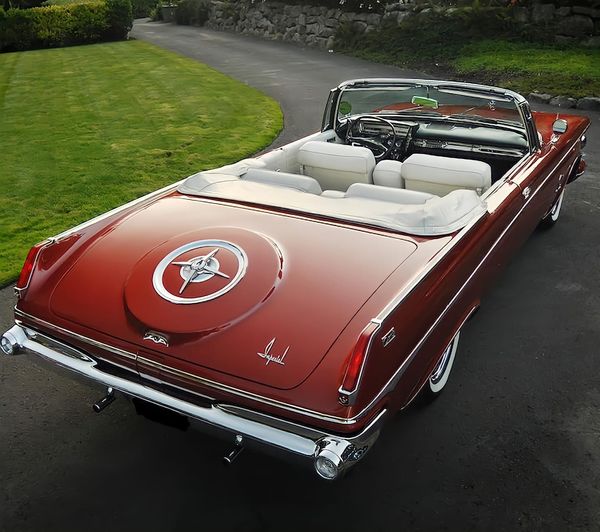Although Chrysler Corporation introduced a prestige model, the Imperial, in 1926, its third year of production, it was nearly three decades before it became a marquee in its own right.
What had long been the most expensive Chrysler model became, for model year 1955, simply “Imperial,” and offered three body styles in two series. This separate branding was a direct challenge to Lincoln and Cadillac.
For the next two years, Imperial was largely a long-wheelbase Chrysler with a bolder grille, the latter appropriated for Chrysler’s performance model, the 300. In 1957, however, Imperial was reinvented with a new personality, its gun-sight taillights incorporated into growing tailfins and curved side glass foretelling an industry trend. This year also marked the appearance of a faux spare tire embellishment on the decklid, a device first seen on the Exner-designed and Ghia-built concept cars of 1952-53.
For 1961, Exner conceived another retro feature, free-standing headlamps, ensconced in alcoves beside the grille. Denigrated by some as “difficult to wash,” they gave the car a unique cachet, a classic touch never emulated in any other automobile.
This 1963 Imperial Crown convertible, one of 531 built, is, except for the exclusive long-wheelbase limousine, the rarest of the breed.
Like all 1963 Imperials, it is powered by a 340bhp, single-quad version of Chysler’s 413 cubic inch “wedge” engine. The transmission is the bulletproof Torqueflite three-speed automatic

